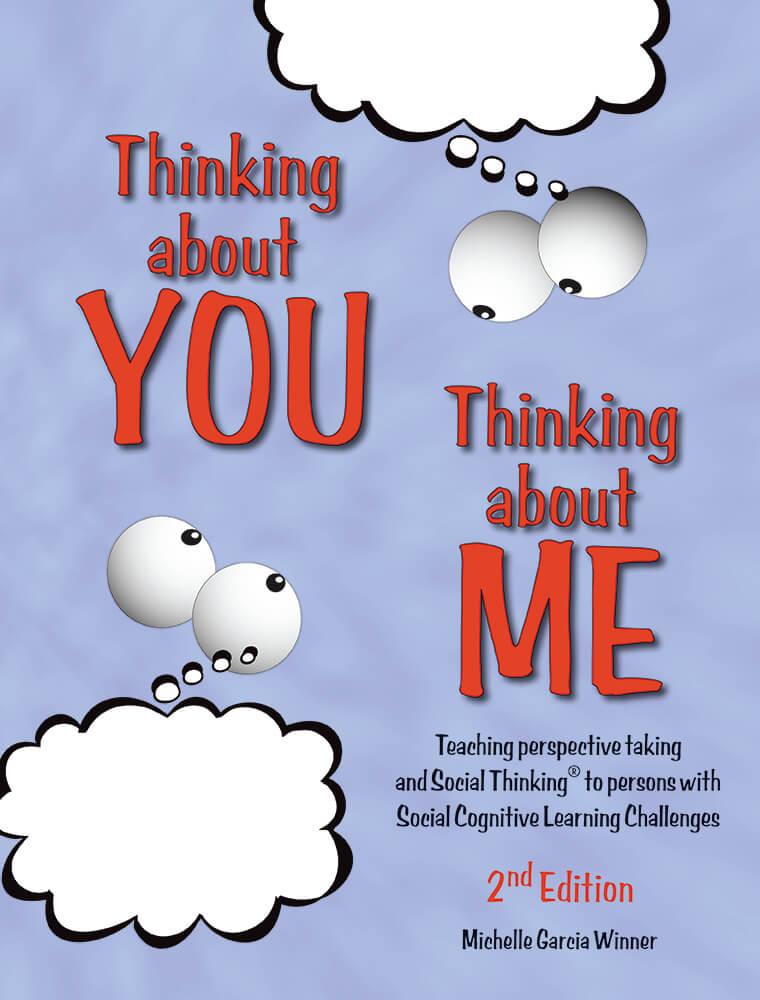Updated: May, 2022
© 2022 Think Social Publishing, Inc.
Do you know students who seem to be “checked out” in class, in groups, or even during breaks? Students like this often appear out of sync and even seem to be unaware of—or confused by—what is going on in that moment. While some students receive a medical diagnosis related to attention challenges (ADHD, ADD), prompting adaptations and support, others do not and can be overlooked, especially if they are not disrupting the class and are simply “checking out.” Note: Please talk to the parents to learn if there are similar attention challenges at home. Also, always consult special education professionals or medical professionals to rule out neurological or other factors that might contribute to the student’s inattention.
A persistent pattern of social inattention is not a behavior problem
Attention is not a behavior. When you see a persistent pattern wherein a child appears unaware of what is going on around them, even with routines, visuals, and cues, we need to avoid assuming they are choosing to not pay attention, or just want to be alone, or that they have a behavior problem. Instead, their brain may be struggling with how to figure out how the social world works. They may not intuitively attend to and learn the subtle contextual cues, social systems, and patterns of communication that neurotypical students learn intuitively. So, they may need an extra layer of support to actively participate when learning in group situations.
Social attention and social thinking
Neurotypical individuals, even during infancy, are intuitively aware of each other. They are developing language, motor skills, and early social competencies, like joint attention. Joint attention occurs when toddlers use eye gaze and/or pointing to attempt to direct another’s attention to what they are noticing. By three years old, children are already aware of social expectations and are building the foundations of their social thinking. This early social thinking mindset is the bedrock of later developing social competencies and critical thinking across multiple perspectives.
By the time a child is five years old and entering kindergarten, they already know how to enter a group, show awareness of what’s happening around them, and follow the teacher’s directions. When a child is academically sound or even precocious, educators and parents may not be aware of their budding struggles with learning social and emotional concepts.
Social learners who are easily distracted may struggle to make sense of curricula that also becomes more socially abstract, as it requires students to move away from memorizing facts and move toward analysis of information. Simultaneously, the social expectations of the peer group changes and evolves, requiring students to socially attend to the dynamic social landscapes of peer interactions. Adults in the environment may not notice a student’s struggles, but their peers do!
The reality is that most teachers expect children to intuitively figure out social concepts not explicitly taught in the classroom or within the academic curriculum. Many rely on “classroom management,” not realizing that some students need support to engage the social emotional mind to work and learn as part of a group. It’s entirely possible for students to make it all the way to high school without a fundamental awareness of how the social world works, because most standardized academic and intelligence tests are not designed to measure one’s understanding of how to infer and glean relevance when among people in social contexts.
Most students don’t outgrow challenges with social attention
Just because parents or teachers of kids who seem “checked out” are not complaining doesn’t mean there isn’t a problem. The socially based academic and interpersonal demands do not go away. Instead, they increase in complexity throughout upper elementary school, middle school, high school, and adulthood. Many believe that the development of the social mind is secondary to classroom learning, yet these social competencies are vital for getting and maintaining employment, developing relationships, and being a member of one’s community throughout adulthood.
Here are three suggestions for support:
- Observe and gather information.
Notice when a student exhibits a persistent pattern of social disengagement or confusion during regular, routine classroom instruction and activities. Avoid taking their lack of social attention as an insult or a choice, but instead consider there might be something else going on. Examples of social inattention might include:- Engaging in preferred activities different from the classroom plan (e.g., reading a book from home), talking to oneself, daydreaming, listening to music or playing games in lieu of an assigned task, missing instructions, avoiding activities, struggling to get started, etc.
- Literally interpreting social and academic information. Some students easily learn fact-based information but struggle with interpreting texts, composing paragraphs and essays, determining main ideas, or summarizing information logically and effectively. Examples include struggles to understand what it means to line up, walk with others, or play or work collaboratively.
- Announcing or blurting answers when it’s another student’s turn.
- Becoming very confused and upset when losing a game or not being first in line.
- Withdrawing from attempts to relate and/or work with peers. Some students say they are always happy alone but express sadness when they feel excluded.
- Difficulty engaging in self-directed, goal-oriented work. This is indicative of executive functioning challenges which many of our social learners also face.
- Communicate your observations/concerns with the team and then support one another. Confirm your observations with other key players (parents, support staff, teachers, therapists) and make sure to get the student’s input to understand from their lens too. If a referral for services is needed, then make sure to include your detailed observational information. Frankly, no matter how accomplished, teachers cannot foster social and emotional concepts successfully without the help and support of special education professionals, specialists, and parents.
- Build supports in the classroom.
- Review and prepare students in advance for non-routine events and schedules.
- Use visuals to support instruction, transitions, and routines.
- Post a daily agenda.
- Encourage peer mentoring to help direct attention.
- Avoid assumptions that the student has self-awareness about when they are overwhelmed, confused, or “checking out.” Develop a visual code or reminder with the student that you can use to support them when you notice their inattention.
- Develop a check-in system for figuring out when help is needed rather than expecting them to initiate asking for help. The student may not know what they don’t know, making it more difficult for them to know when they need help.
- Explain information that appears “obvious” to other students and avoid assuming what your student knows about how the social world works.
Students who struggle with social attention or are described as “checked out” can be found in every classroom. Remember: When there is a persistent pattern wherein a child appears unaware of what is going on around them, even with routines, visuals, and cues, we need to avoid assuming they are choosing to not pay attention, or just want to be alone, or that they have a behavior problem. Teachers are on the frontlines and are uniquely qualified to notice students who may otherwise be overlooked. We also encourage teams to avoid the assumption that an academically strong student has an equally strong social attention system. Finally, teams need to work closely with the parents/caregivers, with input from the student, to build supports for learning vital social and academic information.
Please explore our website to enrich your learning with these related resources:
Livestream-Recorded Events
Free Articles
Free Webinars











